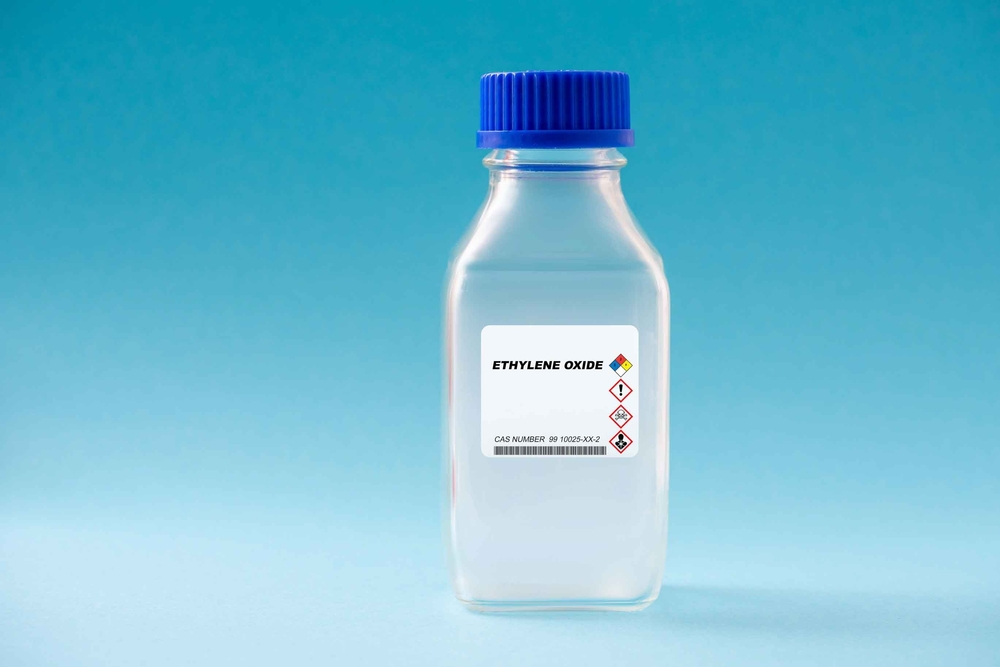Back to Basics is a weekly feature that highlights important but possibly overlooked information that any EHS professional should know. This week, we examine ethylene oxide exposure and OSHA’s prevention recommendations.
Ethylene oxide (EtO) is one of the many industrial chemicals that workers may come into contact with, depending on the jobsite. In addition to the standards, OSHA provides information on EtO exposure and what employers need to know about protecting their workers from the chemical.
Ethylene oxide hazards
According to OSHA, EtO is a flammable, colorless gas that is found in the production of solvents, antifreeze, textiles, detergents, adhesives, polyurethane foam, and pharmaceuticals. It’s produced in large quantities and is primarily used as an intermediate in the production of several industrial chemicals, including ethylene glycol. Smaller amounts are present in fumigants, sterilant for spices and cosmetics, and in hospital sterilization of surgical equipment.
EtO presents many physical and health hazards since it’s both flammable and highly reactive. Acute EtO gas exposure can result in respiratory irritation and lung injury, headache, nausea, vomiting, diarrhea, shortness of breath, and cyanosis. Chronic exposure has been associated with cases of leukemia and other cancers, reproductive effects like spontaneous abortion, mutagenic changes, neurotoxicity, and sensitization. In liquid form, EtO can cause severe skin irritation if there is prolonged contact.
For employers
OSHA’s standard states that employee exposure is limited to one-part EtO per million parts of air (1 ppm) measured as an 8-hour time weighted average (TWA). Exposure may not exceed the short-term excursion limit of 5 ppm EtO averaged over any 15-minute sampling period.
These limits are known as permissible exposure limits (PELs), and most occupational exposures to EtO are covered by the OSHA standard. The standard does not apply to when employers can demonstrate that the processing, use, or handling of products containing EtO will not release airborne concentrations of EtO at or above the standard’s action level of 0.5 ppm.
If workers are exposed to more EtO than the PEL or excursion limit, employers must take the following steps. Use engineering controls and work practices to control employee exposure. Establish and put into practice a written compliance program to reduce exposures to or below the TWA and exposure limit. Implement personal air monitoring as well as information and training programs for employees exposed to EtO at or above the action level or above the excursion limit, and conduct training annually and upon the initial job assignment.
Employers must provide a regulated area wherever airborne concentrations of EtO are expected to exceed the 8-hour TWA or the excursion limit, and establish a medical surveillance program, conducted or supervised by a licensed physician, for employees who have been overexposed for more than 30 days per year. Employers must also remember that employee rotation is prohibited as a means of compliance with the 8-hour TWA or exposure limit.
Place warning labels on all containers that might cause exposure, and select, provide, and maintain the appropriate personal protective equipment (PPE), ensuring that employees use it to prevent skin and eye contact. Respirators are required for workers to use during the following circumstances:
- Installation or implementation of feasible engineering controls or work practices
- Maintenance, repair, and certain operations when engineering and work practice controls are not feasible
- Engineering and work practice controls are not available
- Emergencies
In terms of recordkeeping, employers are required to maintain records relating to employee exposure. They must retain employee exposure records for 30 years, medical records for the duration of employment plus 30 years, and the records of objective data supporting any claimed exemption from the EtO standard requirements.
For employees
Workers can take certain safety precautions to protect themselves from EtO exposure, according to OSHA. Employees should wear goggles and skin protection at all times in areas where liquid EtO is at risk of splashing, and wear the proper PPE or other approved protective gear when working with EtO in general. Clothing that has been degraded by EtO should be discarded as soon as possible. Lastly, employees must also see a doctor if they are exposed to EtO, and they should not eat, drink, or smoke while working around EtO.
For more on ethylene oxide, refer to OSHA’s guidance here.

